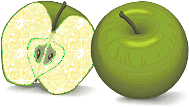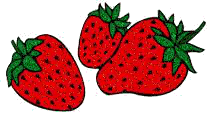*Care*
*Skinny Pig*
"Cavia porcellus" also called the Cavy.
The Skinny pig is a rodent species that belongs to family Caviidae (rodents native to South America) andthe genus Cavia. They are social companion animals that require daily interaction. They communicate by making various sounds that have different meanings and "popcorn," or jump in the air, when happy.
The Skinny Pig is a very unusual, yet an increasingly popular breed of Guinea Pig. There are actually two types of Hairless Guinea Pig, this one and another called the Baldwin Guinea Pig. These nearly hairless critters have a funny way of winning the hearts of nearly all they come into contact with.
Skinny Pigs are as curious and mischievous as any other breed of Guinea pig, but some owners and breeders claim that they are more outgoing. They are quite playful, and they love attention.
*Skinny Pig Facts*
Average adult size: 8 to 11 inches long
Average life span: up to 8 years with proper care
Diet: Herbivore
Although Guinea pigs are herbivores, they still need fruits, vegetables, and grains in their diet. Carbohydrates and fibres are the basis of their diet. They have a high Vitamin C and folic acid requirement and unlike most mammals, they cannot manufacture their own vitamin C. It must be provided in their diet. A good staple food is guinea pig pellets, found in pet stores, and provides all these essential nutrients. Never feed Rabbit pellets! Rabbit pellets will not work as they are not equivalent in nutritive value.
The Skinny Pig has almost no hair on most of its body. The only exceptions are usually the nose and feet. Some have a small amount of hair in other areas such as the rump and shoulders. Its skin is somewhat wrinkled.
Hairless guinea pigs are not significantly physiologically different than regular haired guinea pigs, although they may need to eat slightly more to maintain body heat. The optimal temperature range for a hairless guinea pig is 75 to 79 °F (24 to 26 °C), which is slightly higher than the optimal temperature range for the haired guinea pig.
Please Keep Your Skinny Pig WARM!!
Their sensitive skin has very much the same appearance as human skin, but has the same needs as normal guinea pig skin. Exposed skin is vulnerable to injuries and fungal infections unless precautions are taken. Skinnies are housed indoors and they are usually kept with nesting materials such as a blanket or cloth bag for heat conservation. Skinnies are born nearly hairless and develop more hair as they mature, they can have varying degrees of hairlessness at different life stages.
Skinny Pigs do not require the brushing that other Guinea pigs need, but they do have certain special needs. They are more susceptible to injury than breeds with hair covering their bodies, and they are more sensitive to sunlight and temperature. They need a responsible owner to keep them happy and healthy. :)
These tabs have been put together for you with information that has been obtained directly from guinealynx.com and all credit goes to them. This is for informational and educational purposes. It is to make it easier for you to find all the necessary information you need about the care of owning a skinny pig.

Fruits and Vegetable safe to feed.
• Apples (seedless) (limited amounts only)
• Artichokes
• Asparagus
• Bananas Dyed
• Basil
• Beet Greens
• Broccoli (limited amounts only)
• Brussels Sprouts (rich in vitamin C)
• Cabbage C but also (limited amounts only)
• Cantaloup Melon
• Carrots , Baby Carrots
• Carrot Tops
• Cauliflower leaves and stalks (rich in vitamin C) (limited amounts only)
• Celery
• Chicory Greens
• Chinese Parsley
• Chive(rich in vitamin C) (limited amounts only)
• Cilantro
• Clovers
• Coriander Greens
• Cucumber
• Dill (rich in vitamin C) (limited amounts only)
• Endive
• Fennel
• Garden Cress
• Grapefruit (rich in vitamin C)
• Grass fresh and dried
• Gooseberries
• Guava


• Kale
• Kiwi (rich in vitamin C)
• Kohlrabi (rich in vitamin C) (limited amounts only)
• Mango
• Melon
• Mustard greens
• Orange (rich in vitamin C)
• Parsley (rich in vitamin C)
• Parsnip
• Pears (limited amounts only)
• Peas
• Peppers, Green C but best Red (rich in vitamin C)
• Pineapples (rich in vitamin C) (limited amounts only)
• Radish (limited amounts only)
• Red Beets
• Red Cabbage (limited amounts only)
• Red Chard
• Romaine Lettuce
• Savoy Cabbage (limited amounts only)
• Spinach (rich in vitamin C)
• Strawberries (rich in vitamin C)
• Swede
• Swiss Chard
• Tangerine
• Tomatoes (rich in vitamin C)
• Turnip Greens (limited amounts only)
• Tuscan Cabbage (limited amounts only)
• Water Cress
• Water Mellon
• Zucchini


Please keep in mind that all Guinea Pigs are different. Not all of them will like the same thing. The best diet for your Guinea Pigs are their pellets, which are specifically formulated for them.
Important - Never feed rabbit pellets!



